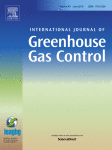 Authors: Chechet BILIYOK¹, Adekola LAWAL², Meihong WANG¹, Frank SEIBERT³
Authors: Chechet BILIYOK¹, Adekola LAWAL², Meihong WANG¹, Frank SEIBERT³
Affiliations: ¹Process Systems Engineering Group, School of Engineering, Cranfield University, Bedfordshire MK43 0AL, UK; ²Process Systems Enterprise Ltd, 26-28 Hammersmith Grove, London W6 7HA, UK; ³Separation Research Program, University of Texas at Austin, Austin, TX 78758, United States.
Reference (APA): Biliyok, C., Lawal, A., Wang, M., & Seibert, F. (2012). Dynamic modelling, validation and analysis of post-combustion chemical absorption CO 2 capture plant. International Journal of Greenhouse Gas Control, 9, 428–445. https://doi.org/10.1016/j.ijggc.2012.05.001
Abstract: “Development of dynamic models for post-combustion CO2 capture using monoethanolamine solvent has been reported in the literature. Such models are only validated at steady-state, which means the models can predict process performance at different operating points. However, without dynamic validation, there is no guarantee that the model in question would predict dynamic responses accurately. This paper presents a dynamic validation study. …”
Comments: the authors are using gPROMS from Process Systems Enterprise to model the amine plant and are using the Electrolyte Non-Random-Two-Liquid (ElecNRTL) model, an activity coefficient model available in Aspen Properties®, to describe the vapour–liquid equilibrium, the chemical equilibrium and the physical properties of the system. gPROMS accesses Aspen Properties through the link provided by the implementation of the CAPE-OPEN Thermodynamic and Physical Properties interface specification on both sides.
